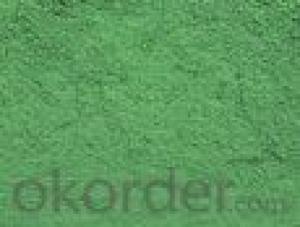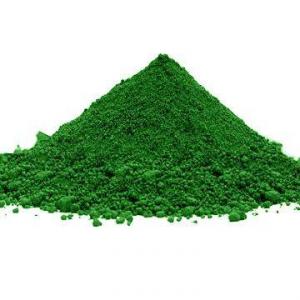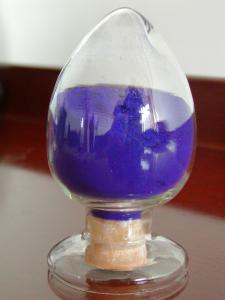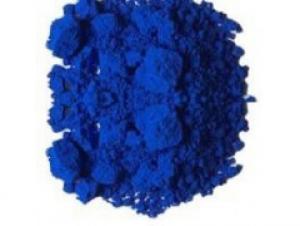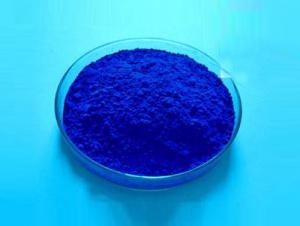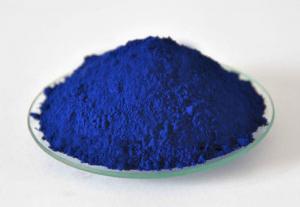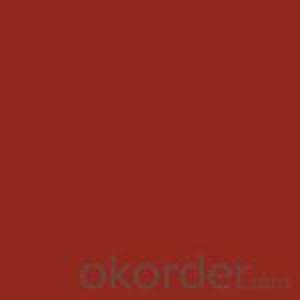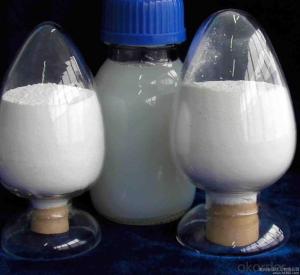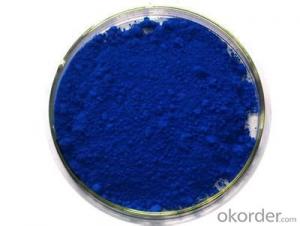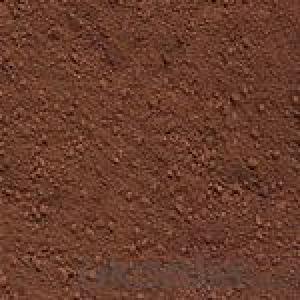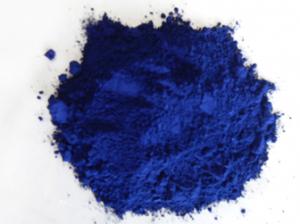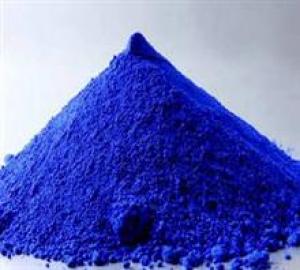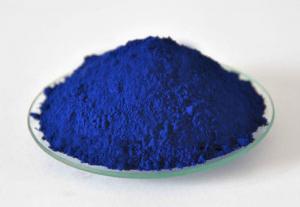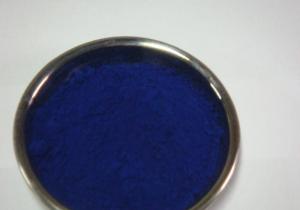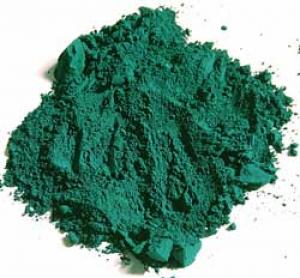iron oxide green pigment 5605
- Loading Port:
- China Main Port
- Payment Terms:
- TT OR LC
- Min Order Qty:
- -
- Supply Capability:
- -
OKorder Service Pledge
OKorder Financial Service
You Might Also Like
· CAS No.: 1309-37-1;1317-60-8;1332-37-2
· Other Names: Ferric Oxide
· Place of Origin: (Mainland)
· Usage: Ceramic Pigments, Coating Pigment, Cosmetic Pigment, Ink Pigments, Plastic & Rubber Pigment, Leather Pigments, cement/concrete parts pigments
· Model Number: 5605
· Type: Iron Oxide Green
· Style: Inorganic Pigment
· Product Name: iron oxide brown pigment
· Type: 5605
· Fe3O4 component: from 40% to 45%
· Moisture: black, <1.5% red,yellow,green<1%
· PH value: 4-6
· Apparent Density: 0.7g/cm^3-1.1 g/cm^3
· Particle shape: spherical,irregular,acicular
· Inspection/certification: SGS,CIQ,BV,Asia Inspection
· Package: pp or colored valve or super bags
Packaging & Delivery
Packaging Details: | 1. 25kgs thermo-fusible bags 2. 25kgs paper bag with plastic inner 3. 25kgs colored valve bag 4. 600kgs or 1000kgs super or jumbo bags 5. 1 tons or 1.25 tons wooden pallet 6. other customized package like the drum etc |
Delivery Detail: | within 15-20 days after signing the contract |
Specifications
iron oxide black pigment
1.red/yellow/blue/green/brown
2.SGS/BV/ISO9001 inspected
3. tinting strength>95%
4. chromatism<1
1: Brief introduction of the iron oxide pigment:
The Iron oxide pigment is made by iron, hydrochloric acid, sodium hydroxide which is adopted wet processing method...
As the most important inorganic colorant, the iron oxide pigment is characterized with strong tinting strength,easy
dispersibility,excellent fastness and good weather resistant, it is widely used in the concrete roofing tile,paver,
stucco,masonary,paint,coating,rubber, plastic,paper and leather industries...
2. The technique data and specification of the iron oxide pigment:
Item | Index |
Primary color |
|
Diluted color |
|
Iron content (Fe3O4) 105℃ drying%≥ | 43 |
Fineness (325 mesh wet sieve residue)%≤ | 0.5 |
Oil absorption, g/100g | 25-35 |
Moisture & 105℃ volatile% | 1.0 |
Water solubles% ≤ | 0.5 |
Water suspended matter PH value | 4-6 |
Relative tinting strength (compared with standard sample%) ≥ | 100±2 |
3. The application of the Iron oxide pigments:
A: Iron oxide pigment is used as dye or colorant in various prefabricated concrete parts and architectural products and material,
it is directly added into cement to color up various indoor and outdoor cement surface, for example: wall,terrances,ceilings,
pillars,corridors,roads, car-parking stairs as well as building ceramic and glazed ceramics.. like facing bricks, floor tile, roofing
tiles,panels,terrazzo,mosaic tiles,artificial marbles,etc...
B: Iron oxide pigment is also applicalbe to different coating and protetive materials, including water-based exterior wall paint,
and powder coating, as well as to oil paints. such as epoxy,alkyd,amidogen, and some other primier and finish paint.. it can be
used in toy paints,decorative paints,furniture lacuquers,electrophoresis paints, and enameled paints,etc..
C:Iron oxide pigment is also used coloring material for plastic products like the thermosetting plastic and thermoplasstic,
as well as in rubber products, such as tyre tubes for bycle,automobile,etc..
4. The package and transporation, loading conditions of the Iron oxide pigments:
A: The package of Iron oxide pigment:
a:25kgs thermo-fusible bags
b:25kgs paper bag with plastic inner
c:25kgs colored valved bag
d:600kgs or 1000kgs super or jumbo bags
e:1 ton or 1.25 tons wooden pallet
f:other customized package like the drums etc..
B: The quantity of each iron oxide pigments can be loaded:
a: Iron oxide red 25kgs craft paper bags, 22 MT per 20ft container
b: Iron oxide yellow 25kgs craft paper bags, 13MT per 20ft container
c: Iron oxide black 25kgs craft paper bags, 20MT per 20ft container
5. Why choose us as the supplier of the iron oxide pigments:
A: Professional:
21 years experieance focusing on pigment industry, professional guide and throughly market analysis..
B: Quality control:
high quality raw material, advanced equipment, accept SGS,BV,Asia inspection, ISO9001 certification..
C: Competitive price:
strictly control the production cost, factory producing, lower product profit strategy
D: Best service:
quick delivery time, 24 hours quick response, quick reaction for any questions or problems
E: Sample free:
All sample is free, customer just need to pay the charges of express, when the sample is qualified,
will pay back the sample express fees back from trial order..
G: Good credit:
attend the china internal coating exibiton held in guangzhou and shanghai
6. The situation of our customers :
We only focus on pigments,especially inorganic pigments including iron oxide pigment, chrome yellow and
orange,XD titanium pigments, new iron titanium anticorrosion powder.. we got ISO9001certification and accept
SGS,BV,Asia inspection or other third party inspection before shipment..
We has been exported our goods to south korea, malaysia,Russia,Somalia,Ethiopia,
America,Brazil,Central asia for good quality and best credit...
7. Other informations:
A:Moq: 5 Tons
B:Payment Term: TT or L/C sight
C: H.S code: 2821100000
- Q: How to manufacture FRP pigments?
- Pigment A finely divided material which contributes to optical and other properties of paint, finishes, and coatings. Pigments are insoluble in the coating material, whereas dyes dissolve in and color the coating. Pigments are mechanically mixed with the coating and are deposited when the coating dries. Their physical properties generally are not changed by incorporation in and deposition from the vehicle. Pigments may be classified according to composition (inorganic or organic) or by source (natural or synthetic). However, the most useful classification is by color (white, transparent, or colored) and by function. Special pigments include anticorrosive, metallic, and luminous pigments. See also Dye; Luminous paint; Paint.
- Q: I hear about it cause my Friend is albino and she was born with no pigments in her hair,skin or eyes
- Melanin is a pigment that is ubiquitous in nature, being found in most organisms (spiders are one of the few groups in which it has not been detected). In animals melanin pigments are derivatives of the amino acid tyrosine. The most common form of biological melanin is eumelanin, a brown-black polymer of dihydroxyindole carboxylic acids, and their reduced forms. All melanins are derivatives of polyacetylene. The most common melanin – dopamelanin – is a mixed copolymer of polyacetylene, polyaniline, and polypyrrole. Another common form of melanin is pheomelanin, a red-brown polymer of benzothiazine units largely responsible for red hair and freckles. The presence of melanin in the archaea and bacteria kingdoms is an issue of ongoing debate among researchers in the field. The increased production of melanin in human skin is called melanogenesis. Production of melanin is stimulated by DNA damage induced by UVB-radiation,[1] and it leads to a delayed development of a tan. This melanogenesis-based tan takes more time to develop, but it is long lasting.[2] The photochemical properties of melanin make it an excellent photoprotectant. It absorbs harmful UV-radiation and transforms the energy into harmless heat through a process called ultrafast internal conversion. This property enables melanin to dissipate more than 99.9% of the absorbed UV radiation as heat[3] (see photoprotection). This prevents the indirect DNA damage that is responsible for the formation of malignant melanoma and other skin cancers. Albinism (from Latin albus, white; see extended etymology, also called achromia, achromasia, or achromatosis) is a congenital disorder characterized by the complete or partial absence of pigment in the skin, hair and eyes due to absence or defect of an enzyme involved in the production of melanin.
- Q: What is a pigment and their function in photosynthesis?
- a pigment is any substance that absorbs light. chlorophyll, the green pigment common to all photosynthetic cells, absorbs all wavelengths of visible light except green, which it reflects to be detected by our eyes. black pigments absorb all of the wavelengths that strike them. white pigments/lighter colors reflect all or almost all of the energy striking them. pigments have their own characteristic absorption spectra, the absorption pattern of a given pigment. a photosynthetic pigment or chloroplast pigment is a pigment that is present in chloroplasts or photosynthetic bacteria. its function is to capture the light energy necessary for photosynthesis. :)
- Q: I have bought 2 Mac Pigment to use as eyeshadow,I thought it was supposed to be easy to use,turned out it wasn't.My eye looked like I got hit, so messy and the pigment was all over the place. I wonder if i should wet my brush or do u have some kind of tricks before applying it.Any advice would be appreciated.Thanks for helping.
- apply it carefully with the brush...if it loks to bad you can go back to the store to help you..they always help me there;)
- Q: How many pigments does grass reflect?
- Pigments are the colors that make grass look green. They are the pigments that do photosynthesis. Grass looks green because it reflects green light. It reflects the wavelengths of light that have the frequency of green light. Grass has other pigments that we do not see through the chlorophyll, but it is the light that is reflected.
- Q: ive been watching a lot of makeup videos on youtube and a lot of the girls use mac pigments. what exactly are they and how are they different from regular eyeshadow? are they easier or more difficult to use?
- Pigment okorder /....
- Q: Compare and contrast pigment color with the color seen from a light. What is the difference between mixing pigment colors and mixing light colors?
- you notice pigments the colour you notice them, using fact they replicate a spectra of sunshine, with particular frequencies, and take up all others seen to the human eye. in case you combine distinctive monochromatic mild with distinctive colours (as seen on the television: purple, green and blue it quite is referred to as additive mixing, or magenta, yellow and cyanide that's the different technique) your retina will upload the colors up, and experience it as a distinctive shade. (by skill of including each and all of the three colours on an identical intensity, you are able to create white mild) while mixing pigments (they are chemical compounds) you get a clean cloth, which will replicate an different spectra of sunshine, which you will see as a shade
- Q: i was thinking of this all day long and then i thought of posting this question for you to help me sort it out
- Pigments are molecules that absorb specific wavelengths (energies) of light and reflect all others. Pigments are colored: the color we see is the net effect of all the light reflecting back at us. Absorb: Electrons in molecules can exist at specific energy levels. Normally they exist at the lowest possible energy level they can. However, if enough energy comes along to boost them into the next level, they can absorb that energy and occupy that higher level. This is what pigments do. The light they absorb contains' just the right amount' of energy necessary to push them into the next level. Any light that does not have enough or has too much energy can not be absorbed and is reflected. The electron in the higher energy level, however, does not 'want' to stay there(i.e. it is unstable). It 'wants' to return to its normal lower energy level. In order to do this it must get rid or release the energy that has put it into the higher energy state to begin with. This can happen several different ways: 1) The extra energy can be converted into molecular motion and lost as heat. 2) Some of the extra energy can be lost as heat energy, while the rest is lost as light. This re-emission of light energy is called florescence. 3)The energy, but not the e- itself, can be passed onto another molecule. This is called resonance. 4)The energy and the e- can be transferred to another molecule. Plant pigments usually utilize the last two of these reactions to convert the sun's energy into their own. When chlorophyll is isolated from the enzymes it is associated with, the second scenario can be seen to happen.
- Q: Pleaseeeeee answer A.S.A.P Pleaseeee! Are pigments haram?
- Pigments are extracted from plants as well as animals . For more kindly click on the link below = en.wikipedia.org/wiki/Biological_... Most of the pigments that we use are either from plants ,from minerals or synthetic in origin . Most of the edible pigments are synthetic or from plants so they are not haram . It is now compulsory to indicate any animal material used in any edible product including tooth pastes by a deep red square on the label . If it is 100% plant product then green squre is shown on the label . So you can judge if it is Haram or not by yourself.
- Q: is it the ink on regular printers?
- Some printers use only pigmented ink. Others use dye based and then some use a combination of both. Dye based ink is basically water based with a dye added to it. Pigmented ink has a solvent base with dye added. Pigment ink and dye based ink have both advantages and disadvantages. Dye based ink have better colors but pigment are more water and fade resistant. Dye based inks are therefore better for photos. I have a printer that has 4 dye based inks and a black pigment ink. Mine uses the dye based black and colours for pictures and the pigmented black is used for text. So the answer is yes. Pigmented ink is used in some regular printers.
Send your message to us
iron oxide green pigment 5605
- Loading Port:
- China Main Port
- Payment Terms:
- TT OR LC
- Min Order Qty:
- -
- Supply Capability:
- -
OKorder Service Pledge
OKorder Financial Service
Similar products
Hot products
Hot Searches
Related keywords
